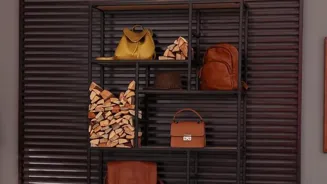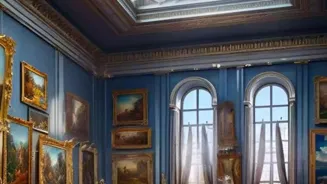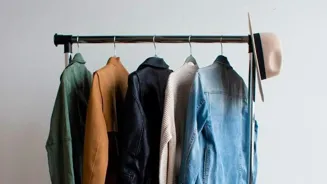Discover the Origin Stories of Your Favorite Fashion Accessories - A Dive Into History & Culture. Read More!
From the jhumkas tinkling merrily in our ears to the trusty handbags slung across our shoulders,
fashion accessories are an integral part of our daily lives. They add that tadka of personality to our outfits, elevate ensembles, and sometimes, even serve a practical purpose.
But have you ever stopped to wonder where these everyday items actually came from? The stories behind them are often surprisingly rich, winding through centuries of history and across continents.
So, let's embark on a fascinating journey to uncover the origins of ten popular fashion accessories, revealing the historical and cultural contexts that shaped them into the must-haves we know and love today. Prepare to be enlightened, inspired, and maybe even a little bit surprised!
Let's dive into the world of style and trace the evolution of these iconic pieces.
Scarves: ancient origins to modern fashion accessory evolution
The ubiquitous scarf, now a wardrobe staple for adding a pop of colour or warmth, has a surprisingly ancient lineage. Its origins can be traced back to ancient Egypt, as far back as 1350 BC.
Queen Nefertiti, known for her elegance, is believed to have worn a tightly woven scarf under her elaborate headdress. These early scarves were often made of linen and were primarily used for practical purposes, such as protecting the wearer from the sun and dust.
Over time, the scarf evolved beyond its utilitarian function and became a symbol of status and wealth. In ancient Rome, scarves, then called "sudarium," were used to wipe sweat from the face and neck, signifying a person of privilege.
The Chinese warriors also used scarves to indicate their rank, and they were also used in warfare. The modern scarf, as we know it, really took off in the 19th century, becoming a major fashion statement in Europe, particularly in France and England.
Different fabrics, patterns, and styles emerged, transforming the scarf into the versatile accessory it is today. From silk squares adding a touch of nazakat to a simple outfit to cozy woolen wraps warding off the winter chill, the scarf continues to reinvent itself.
The evolution of handbags mirrors changing roles of women
Next, let's consider the ever-present handbag. Far from being solely a fashion statement, the history of the handbag is closely intertwined with the changing roles of women throughout history.
In ancient times, both men and women used pouches or small bags to carry essential items, but as women's roles within society shifted so did the use of bags. During the Medieval and Renaissance periods, purses were often attached to belts or hidden beneath clothing.
These pouches were essential for carrying coins, keys, and other valuables. It wasn't until the 17th and 18th centuries that handbags began to evolve into more decorative and recognizable forms.
These early handbags, often called reticules or indispensables, were small, delicate pouches made of silk or velvet, often embroidered with intricate designs. The industrial revolution in the 19th century also fueled the evolution of the handbag.
As travel became more accessible, larger bags were needed to carry belongings. Today, the handbag has evolved from a practical necessity into a statement of personal style. From designer handbags costing more than a small car to simple cloth bags carrying everything you need for the day.
Belts: From ancient utility to modern style evolution
Moving on to another timeless accessory, the humble belt has a surprisingly long and practical history. While we often see belts as a fashion statement, their initial purpose was purely functional. Belts have been used for millennia to hold clothing in place, offering a secure and adjustable fit.
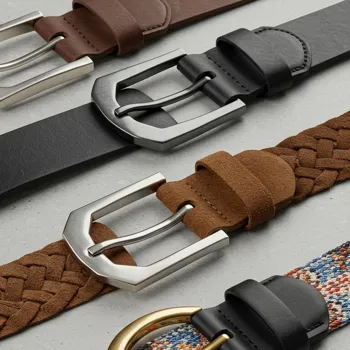
Evidence of belts has been found in archaeological digs dating back to the Bronze Age. These early belts were made of leather and often decorated with metal buckles. In ancient Greece and Rome, belts were commonplace among both men and women.
Roman soldiers wore belts to carry their weapons and equipment, emphasizing their practical importance. Over time, belts began to signify rank and status, with different materials and decorations indicating social standing.
During the Middle Ages, belts became highly ornamental, adorned with jewels and elaborate buckles. The modern belt has embraced a wide variety of styles, from simple leather designs to statement pieces embellished with rhinestones and unique buckles.
Whether cinching a dress, adding definition to an outfit, or simply keeping your pyjamas up, the belt remains a versatile and essential accessory. Its journey from ancient utility to modern style is a testament to its enduring appeal.
History and significance of hats throughout cultures and centuries
Consider the ever-popular hat. The history of hats is as diverse and varied as the cultures that have worn them. For centuries, hats have served as a symbol of status, occupation, and even religious affiliation. In ancient times, hats were often used to protect the head from the sun and elements.
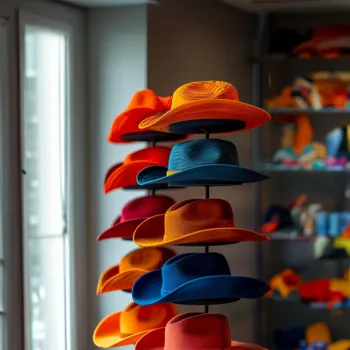
Egyptians wore elaborate headdresses that signified rank and power. In medieval Europe, hats became an integral part of fashion, with different styles indicating social status and profession.
The 18th and 19th centuries saw an explosion of hat styles, with elaborate bonnets, top hats, and wide-brimmed hats becoming popular. A person’s hat served as a visual indicator of their place in society.
This trend persisted for many years, with people often taking pride in being well-dressed at any formal occasion. The 20th century saw a shift away from formality, and hats became less ubiquitous, the hat remains a significant fashion accessory.
Whether it's a baseball cap, a beanie, or a wide-brimmed sunhat, hats continue to add personality and style to outfits, providing a finishing touch that completes any look.
The history and significance of earrings across cultures
The story of the earring is one that combines beauty, symbolism, and ancient traditions. Earrings have been worn for millennia, with evidence dating back to ancient civilizations in Asia, Africa, and South America. Early earrings were often made of simple materials like bone, stone, and shells.
They were primarily used as symbols of status, identity, or religious affiliation. In ancient Egypt, earrings were worn by both men and women to signify wealth and power. In ancient Rome, earrings were a symbol of freedom for slaves.
In many cultures, earrings have been associated with protection and healing. It wasn’t until later that the modern-day earring was made of precious metals and gemstones.
In the Renaissance, earrings became more elaborate, with pearls, diamonds, and other gemstones adorning the ears of wealthy Europeans. Today, earrings are available in an endless variety of styles.
From simple studs to elaborate chandeliers, earrings provide a way to express you personality and compliment your personal style.
Exploring the history and significance of bracelets through time
Finally, let's explore the beloved bracelet. A simple band worn around the wrist can hold layers of meaning and history. Bracelets have been worn for thousands of years, with evidence dating back to ancient Egypt.
These early bracelets were often made of natural materials like shells, stones, and bones and were used as symbols of status, power, and religious belief. In ancient Rome, bracelets were worn by soldiers to protect their wrists and add to their status. They were crafted from bronze or leather.
Ancient bracelets were adorned with symbols related to warfare and status. In many cultures, bracelets were thought to bring good luck or ward off evil spirits. As time passed and cultures began sharing knowledge, bracelets began being made out of various materials.
Gemstones, wood, and metals began being used. Today, bracelets remain a popular fashion accessory, often used to complete any outfit. Whether it’s a beaded bracelet or an elegant bangle, they provide a unique way to display your personality.
Fashion accessories tell unique stories of history and culture
These are only a handful of the many fashion accessories that enrich our lives, each item woven with unique stories. From ancient origins to modern interpretations, the details behind these objects reminds us that fashion is more than just clothing.
It is an expression of history, culture, and personal identity. So, the next time you reach for your favorite scarf, belt, or earrings, remember the journey it has taken through time and culture.
